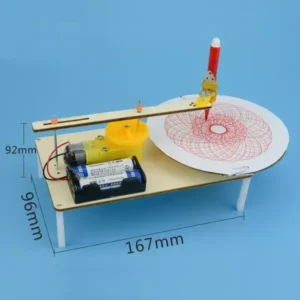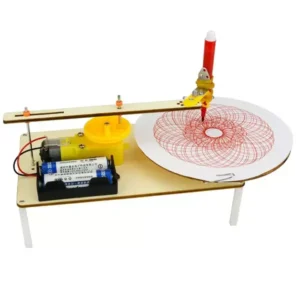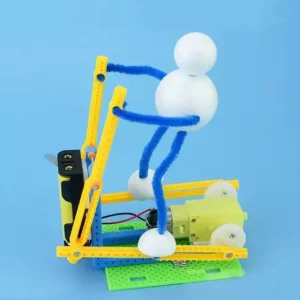Product Details
Reviews
Product Details
Objective:
Demonstrate a model of Convex and Concave Lenses to explain light conversion and diversion, focusing on their optical properties.
Materials included:
Convex lens
Concave lens
Materials not included in the kit:
Procedure and assembly steps:
Procedure included in the kit manual . This is not a ready made product. Student needs to follow the steps to assemble the model…
Description:
Convex Lens:
A convex lens is thicker in the middle and thinner at the edges. When teaching children about convex lenses, you can explain how they work to convert and converge light rays. Here’s how you can describe it:
- Converging Light: Start by illustrating how a convex lens takes parallel rays of light and brings them together, or converges them, at a single point called the focal point. This convergence occurs because the lens bends the light rays towards its center.
- Focal Point: Show how changing the curvature or thickness of the convex lens can affect the position of the focal point. A more curved lens brings the focal point closer to the lens, while a less curved lens moves it farther away.
- Magnification: Explain how convex lenses are used in magnifying glasses and microscopes. When an object is placed between the focal point and the lens, it creates a magnified image on the other side of the lens.
- Applications: Highlight real-world applications of convex lenses, such as in cameras and telescopes, where they help gather and focus light to form clear images.
- Diverging Light: Begin by illustrating how a concave lens takes parallel rays of light and spreads them out or diverges them. This divergence occurs because the lens causes light rays to bend away from its center.
- Focal Point: Explain that a concave lens also has a focal point, but in this case, it is a virtual focal point. Light rays appear to be coming from this point when extended backward. Show how the curvature or thickness of the lens affects the position of this virtual focal point.
- Reducing Size: Describe how concave lenses can be used to reduce the apparent size of objects. When an object is placed between the lens and its virtual focal point, it creates a smaller, virtual image on the same side as the object.
- Applications: Mention applications of concave lenses, such as in eyeglasses for nearsightedness, where they help to spread out incoming light to correct vision problems.
Learning outcome:
Have a better understanding of Convex and Concave Lenses to explain light conversion and diversion, focusing on their optical properties using the model built by the student in this project
Section or subject:
Physics
Grades:
6+
Reviews
Be the first to review “Convex and concave lenses – Light conversion and diversion” Cancel reply

















Reviews
There are no reviews yet.